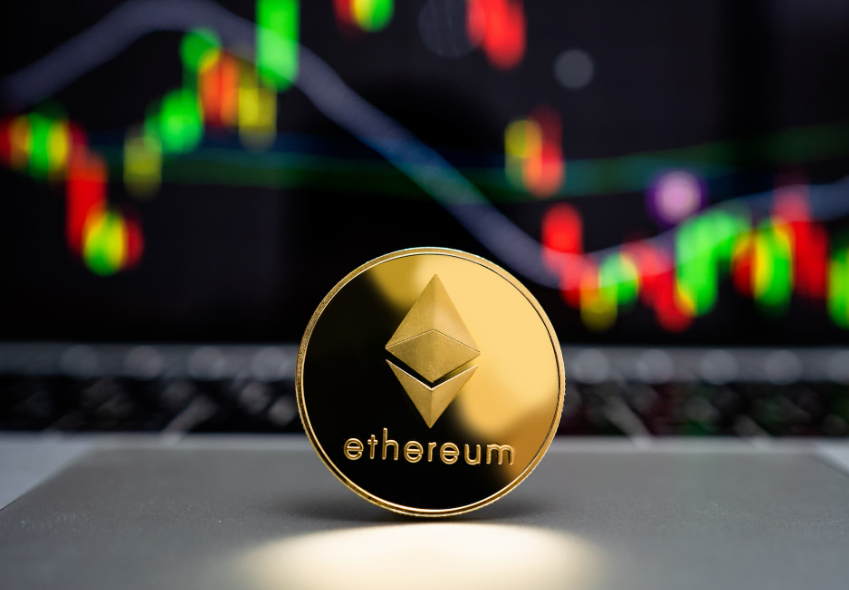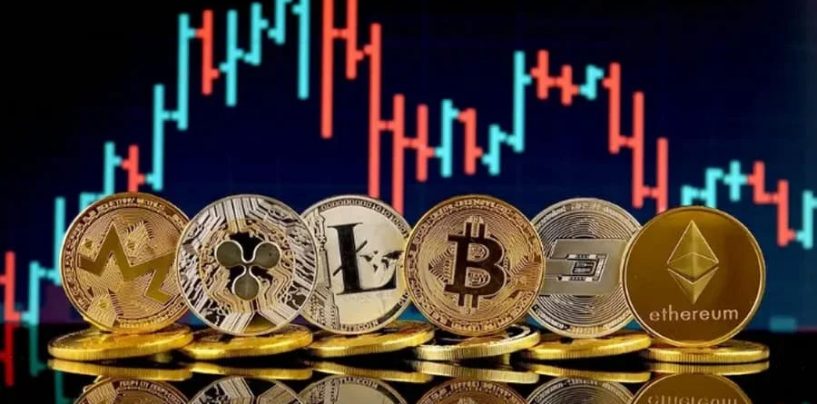Bitcoin Price USD: How Macroeconomic Shocks Shape Its Market Behavior
Introduction
Bitcoin, the world’s first decentralized digital currency, has evolved from an obscure technological experiment into one of the most closely watched financial assets globally. Investors, policymakers, and everyday traders frequently track the bitcoin price USD as a key metric for gauging the health of the broader cryptocurrency market. Unlike traditional financial instruments that are tightly controlled by central banks or governments, Bitcoin operates within a decentralized network of participants. Its price is determined by a complex interplay of supply, demand, sentiment, and macroeconomic forces.
One particularly fascinating dimension is how Bitcoin reacts to macroeconomic shocks—unexpected events that disrupt global markets, such as financial crises, pandemics, inflationary surges, or geopolitical instability. While Bitcoin is often hailed as “digital gold,” serving as a hedge against economic turmoil, its behavior under stress has been mixed and continues to evolve.
This article examines in detail how macroeconomic shocks influence Bitcoin’s price in USD, with reference to past events, economic theories, and potential future scenarios.
The Nature of Macroeconomic Shocks
Macroeconomic shocks are unanticipated events that disrupt financial systems, economies, or global trade. They may arise from:
- Financial system crises – e.g., 2008 Global Financial Crisis.
- Public health crises – e.g., COVID-19 pandemic.
- Geopolitical instability – e.g., Russia–Ukraine conflict, Middle East tensions.
- Monetary policy shocks – e.g., sudden interest rate hikes or unexpected Federal Reserve actions.
- Commodity price shocks – e.g., drastic changes in oil or gold markets.
Each of these shocks affects traditional markets differently, and Bitcoin’s unique decentralized structure often leads to distinctive responses.
Early Perceptions: Bitcoin as a Safe Haven
Bitcoin was created in 2009 in the aftermath of the 2008 global financial crisis. Its genesis block famously contained the message, “Chancellor on brink of second bailout for banks,” signaling its intended role as an alternative to government-controlled money.
Early adopters promoted Bitcoin as “digital gold,” suggesting that during financial instability, investors would seek safety in Bitcoin much like they traditionally do with gold. This narrative persists today, though real-world performance has revealed complexities.
Case Study 1: The COVID-19 Pandemic
The COVID-19 pandemic provides an illustrative example of how macroeconomic shocks impact Bitcoin’s price in USD.
- Initial Crash (March 2020): When global equity markets crashed in March 2020, Bitcoin did not behave as a safe haven. Instead, it fell from around $9,000 to below $5,000 within days. This reflected investors’ scramble for liquidity—selling everything, including gold and Bitcoin, to cover losses elsewhere.
- Recovery and Boom (Late 2020–2021): Stimulus measures, money printing, and ultra-low interest rates fueled massive liquidity in global markets. Bitcoin rallied spectacularly, climbing from $5,000 to over $60,000 within a year. This demonstrated how macroeconomic policies can indirectly support Bitcoin by increasing demand for scarce, non-sovereign assets.
The COVID-19 experience underscores two points:
- In immediate crises, Bitcoin behaves like a risk asset (similar to stocks).
- Over the medium to long term, expansionary monetary policy can boost Bitcoin’s price.
Case Study 2: Inflationary Pressures
From 2021 onward, inflationary fears resurfaced as governments injected trillions of dollars into economies. Traditionally, gold serves as an inflation hedge. However, Bitcoin increasingly attracted investors seeking an alternative inflation-resistant asset.
- Narrative of Scarcity: With its capped supply of 21 million coins, Bitcoin’s scarcity mirrored gold’s appeal as a store of value.
- Performance: While Bitcoin surged alongside inflation concerns, it also remained highly volatile, falling sharply when central banks signaled tighter monetary policy.
Thus, while Bitcoin’s inflation hedge narrative gained traction, it remained inconsistent compared to traditional hedges.
Case Study 3: Geopolitical Shocks
The Russia–Ukraine conflict in 2022 highlighted Bitcoin’s unique geopolitical role.
- Capital Flight: Citizens in Ukraine and Russia turned to Bitcoin as an alternative means of preserving wealth and conducting transactions amidst currency restrictions.
- Price Impact: Initially, Bitcoin’s price fell in line with global risk assets, but soon after, trading activity in Eastern Europe supported renewed interest in the asset.
This case reinforced the idea that Bitcoin can function as a financial escape mechanism when traditional banking channels are disrupted.
Theoretical Explanations for Bitcoin’s Behavior
Several economic theories help explain Bitcoin’s price dynamics during macroeconomic shocks:
- Liquidity Preference Theory: During crises, investors prioritize liquidity. Bitcoin, being highly volatile, is often sold off initially.
- Safe Haven Hypothesis: Over time, Bitcoin regains value as investors seek assets outside traditional financial systems.
- Reflexivity Theory (George Soros): Market narratives (e.g., Bitcoin as “digital gold”) influence investor behavior, which in turn reinforces price trends.
- Risk-On/Risk-Off Dynamics: Bitcoin often behaves as a risk asset (falling when risk appetite declines) but occasionally shifts toward risk-off behavior depending on the narrative of the moment.
Long-Term Structural Impact of Shocks
Macroeconomic shocks don’t just create short-term volatility—they shape the long-term trajectory of Bitcoin:
- Increased Adoption: Shocks often highlight the weaknesses of traditional systems, driving interest in decentralized assets.
- Regulatory Responses: Governments may tighten cryptocurrency regulations following crises, influencing price discovery.
- Technological Evolution: Demand spikes encourage development of better custody solutions, decentralized exchanges, and stablecoin integrations.
Looking Ahead: Future Macroeconomic Shocks and Bitcoin
Several potential shocks may test Bitcoin’s resilience in the coming decade:
- Global Recession: If global growth slows sharply, Bitcoin may again face initial sell-offs, followed by a long-term rebound if central banks reintroduce stimulus.
- Currency Crises: Countries facing hyperinflation or collapsing fiat currencies may increasingly adopt Bitcoin as a parallel system.
- Technological Disruptions: Quantum computing or cyber threats could challenge Bitcoin’s security assumptions.
- Climate and Energy Crises: As Bitcoin mining is energy-intensive, shocks in energy markets may influence both perception and price.
Investment Implications
For investors, understanding how Bitcoin reacts to macroeconomic shocks is crucial:
- Short-Term Volatility: Expect steep declines in initial phases of crises.
- Medium-Term Resilience: Monitor central bank actions—expansionary measures often fuel Bitcoin rallies.
- Long-Term Utility: Crises tend to drive adoption, reinforcing Bitcoin’s long-term growth story.
Conclusion
Bitcoin price usd reflects more than just supply and demand within the crypto space—it is increasingly tied to global macroeconomic dynamics. From the COVID-19 pandemic to inflationary surges and geopolitical conflicts, shocks have consistently revealed Bitcoin’s dual nature: initially volatile, but ultimately reinforced as a credible alternative to traditional financial assets.
While Bitcoin has yet to fully establish itself as a reliable safe haven like gold, its resilience and adaptability suggest that future shocks may continue to strengthen its role in the global financial system. For investors, traders, and policymakers alike, tracking macroeconomic shocks is essential to understanding where Bitcoin’s price may head next.
FAQs
1. Does Bitcoin always rise during economic crises?
No. In the immediate aftermath of crises, Bitcoin often falls as investors sell risk assets for liquidity. However, over time, expansionary monetary policies and increased adoption can drive prices higher.
2. Is Bitcoin a reliable hedge against inflation?
Bitcoin’s capped supply makes it theoretically resistant to inflation. While it has sometimes risen during inflationary periods, its volatility means it cannot yet be considered a consistent hedge like gold.
3. How do geopolitical shocks affect Bitcoin’s price?
Geopolitical shocks often cause short-term volatility. However, in countries facing sanctions or currency restrictions, Bitcoin demand may increase, supporting prices and reinforcing its role as an alternative financial system.



